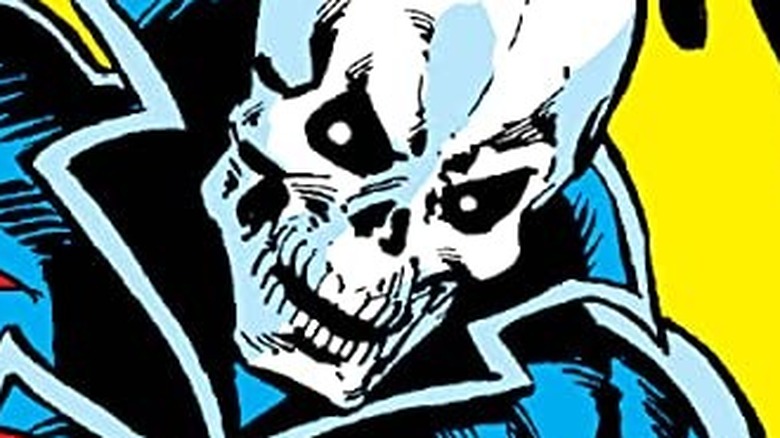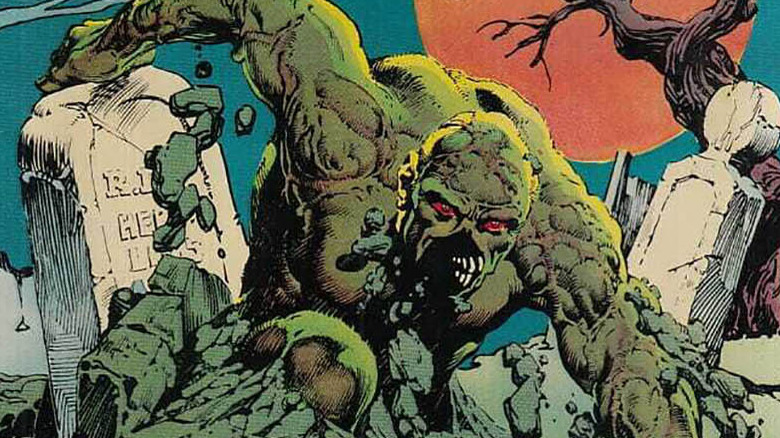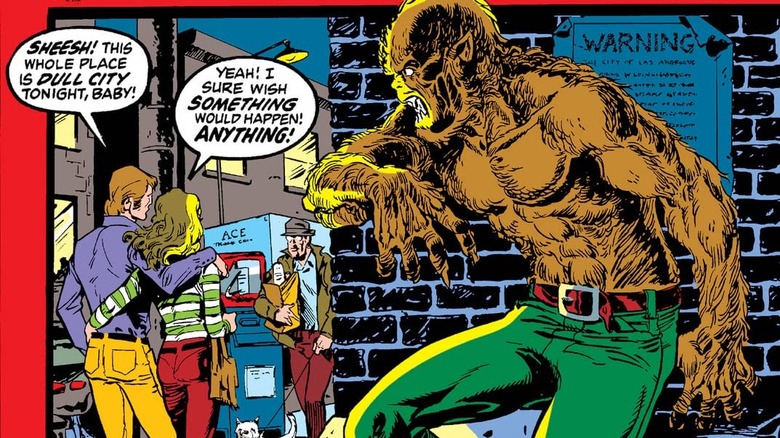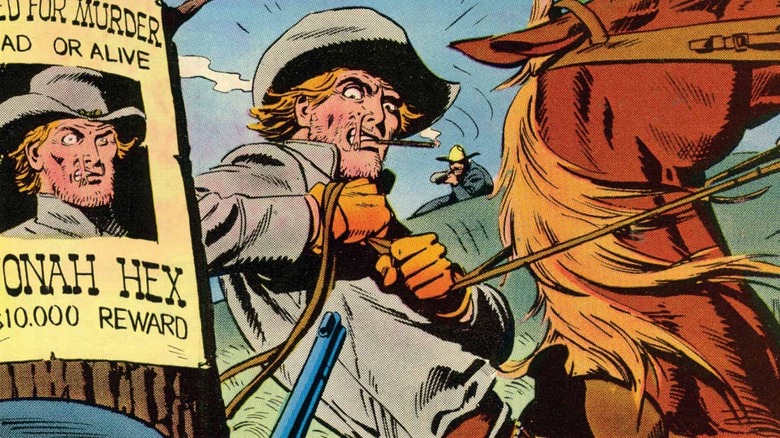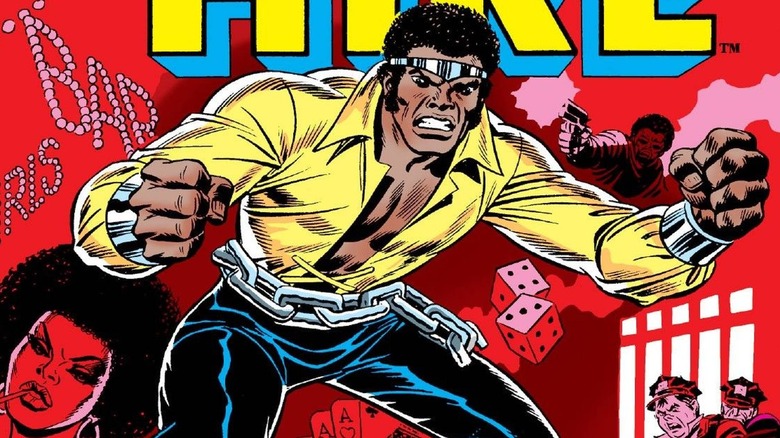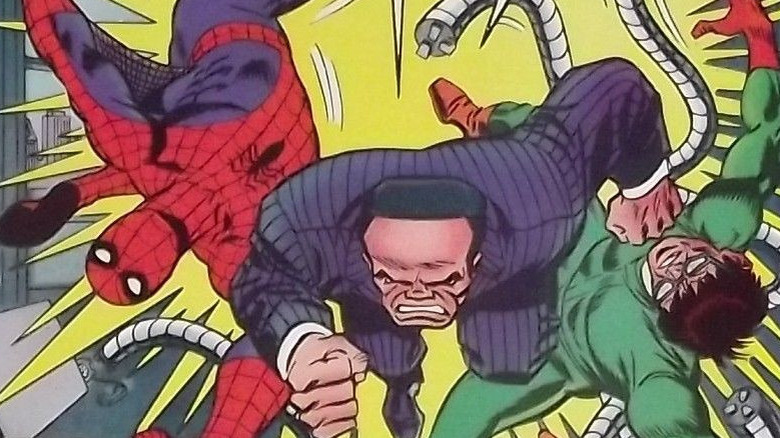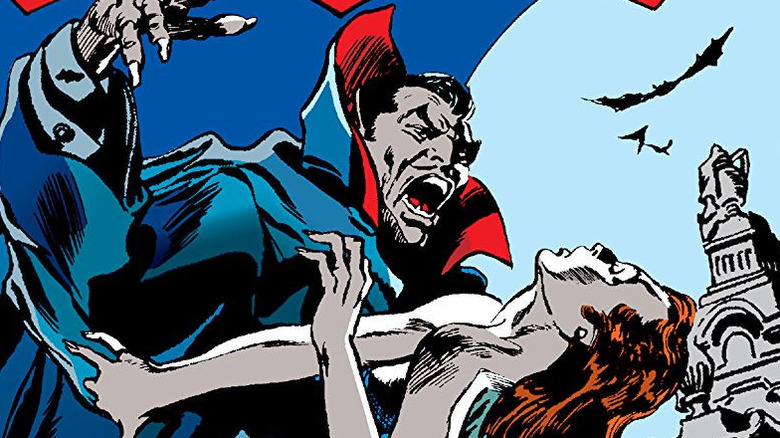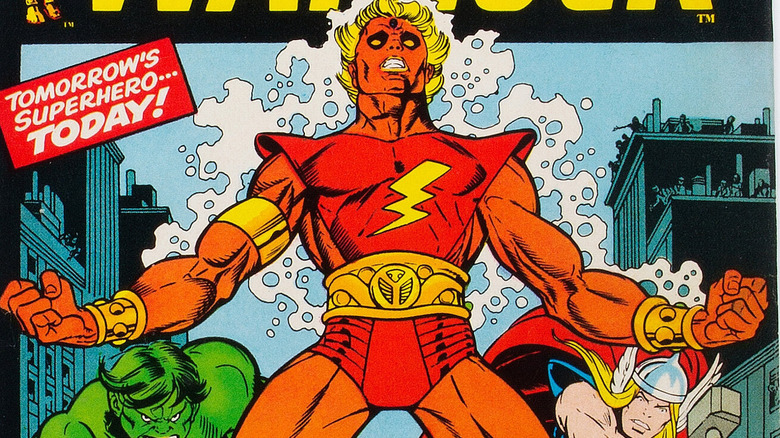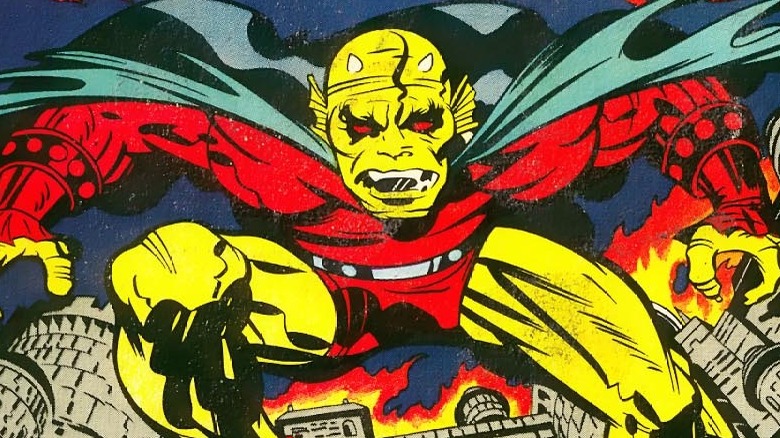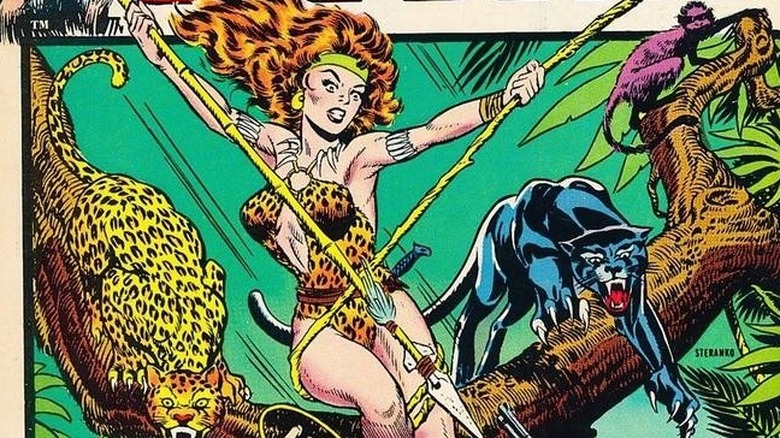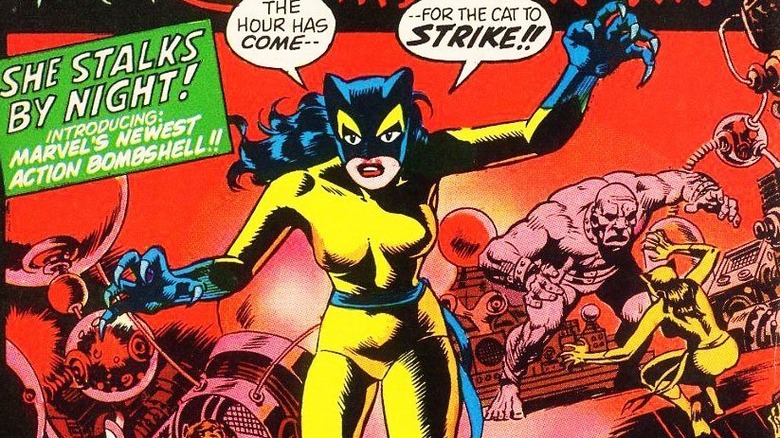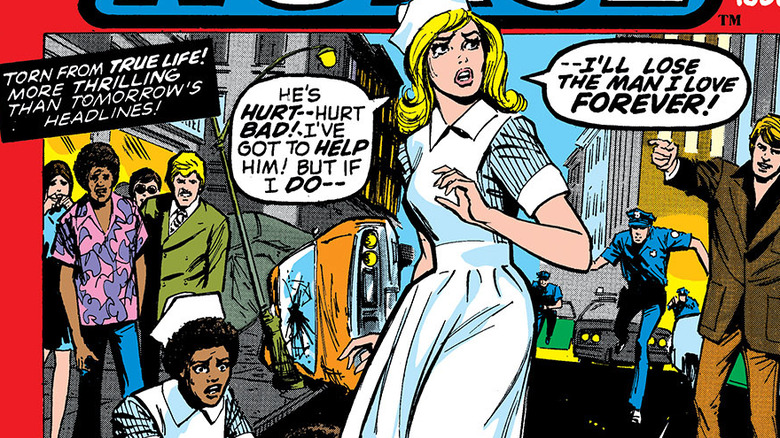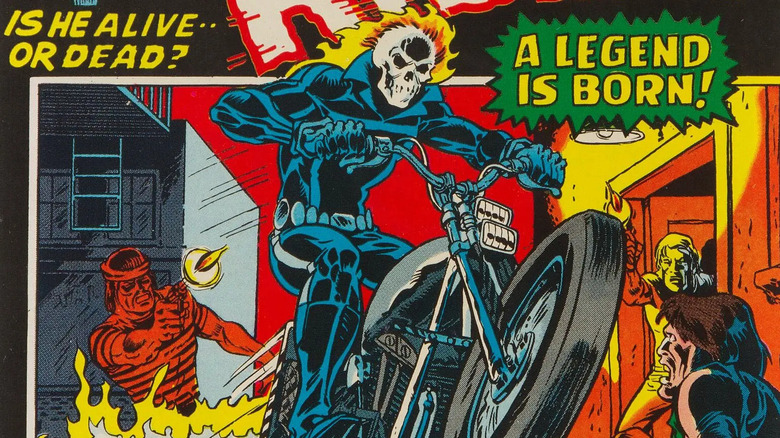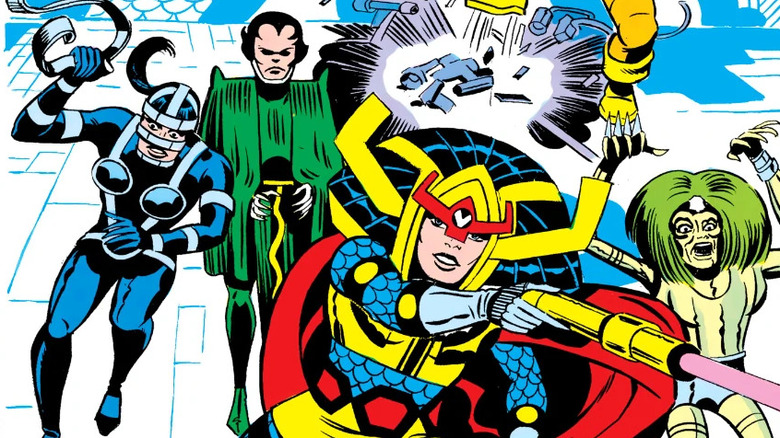Comic Book Characters Turning 50 In 2022
Many, if not most, of the greatest heroes and villains in comics made their debuts in the 1960s, with a few arriving even earlier. Some of DC Comics' most famous, like Superman and Batman, started out as early as the 1930s, while most of Marvel's mightiest stable of superheroes like Spider-Man and Iron Man landed in the early 1960s. By the late '60s heroes like Batgirl and the original Ghost Rider were showing up in the pages of DC and Marvel comics respectively.
The 1970s were a tumultuous era inside and outside of comics. While the Vietnam War raged and Watergate became a major scandal, the decade saw a new breed of hero introduced into comics. The relaxation of many of the Comics Code Authority's stringent rules in 1971 allowed creators to embrace darker anti-heroes and supernatural monsters again. These new characters boasted adult themes and more complex stories that also happened to match the turbulent mood of the era. Appealing to many of the same readers that grew up in the '50s and '60s and were now in high school or college, comics could use heroes and villains to tackle more serious issues too.
Whether it was demonic daredevils or god-like superbeings, many modern day heavy hitters made their debut in 1972. Curious to see who's turning 50 this year? Keep reading.
Swamp Thing (Alec Holland)
Thanks partly to a pair of 1980s feature films — one of them directed by Wes Craven — DC's resident bog monster has become a popular second tier hero in the DC universe. He's made subsequent appearances in animated films, and even starred in his own short-lived live-action series in 2019. While an early version of the character made his debut a year prior, the version most know — alias Alec Holland — first appeared in 1972. Featuring the groundbreaking art of Bernie Wrightson, who would go on to become the preeminent monster artist of the decade, "Swamp Thing" #1 had a cover date of Oct/Nov 1972.
With the first issues of his new series, the original version of Swamp Thing, who had appeared in "House Of Secrets" the year before, was seemingly forgotten. In his place we met Dr. Holland, a scientist who is working with his wife on a formula to solve the world's hunger problems at a lab in the Louisiana Bayou. But during a violent break-in, Alec is exposed to his formula, which spills into the swamp and creates the Swamp Thing: a living human form of vegetation with Holland's memories and consciousness. He would go on to battle all manner of supernatural villains and eventually ally himself with the Justice League.
Werewolf By Night
Sticking with the monster theme, Marvel's Werewolf by Night made his first appearance in "Marvel Spotlight" #2 dated February of 1972, although he was inspired by an unrelated story published in "Marvel Tales" #116 in 1953. The formation of the Comics Code Authority forced the end to most monster stories, and so it wasn't until the organization relaxed many of its rules surrounding supernatural stories that Marvel decided to resurrect the idea of a werewolf in its comics. This time it would be Jack Russell (yes, like the terrier), a man descended from a long line of lycanthropes who discovers as he gets older that he will turn into a monstrous werewolf by the light of a full moon. He soon uncovers the truth of his family line after the death of his mother, becoming the wandering title beast.
Over the years, Russell would have a whole host of super-heroic monster adventures alongside the likes of fellow supernatural anti-heroes like Man-Thing, Ghost Rider, and Morbius, but also traditional spandex-wearing heroes like Spider-Man, the Avengers, and X-Factor. He's since made appearances mostly in animation, in "Super Hero Squad" and "Ultimate Spider-Man," and is reportedly coming to live action on Disney+ in a Marvel Halloween special.
Jonah Hex
In 1972 DC Comics unexpectedly introduced a new Western anti-hero into their canon with the cowboy called Jonah Hex, who made his debut in "All-Star Western" #10 (Feb.–Mar. 1972). We say unexpected because by the 1970s Western comics were not exactly the best sellers they had been in years past, but somehow Hex proved popular and long-lived. After headlining "All-Star Western" for another two years, Hex would get his own title in 1977. Over the years he's had a number of short-lived comic series, while also appearing in a variety of animated projects (including a memorable episode of "Batman: The Animated Series"), his own live-action feature film starring Josh Brolin, and having a recurring role in the CW "Arrowverse."
A tough-as-nails cowboy, Hex's origins saw him raised by a group of Comanche Native Americans, where he was forced to break the rules in a showdown with the chieftain's son. As punishment, Hex is branded with the "Mark of the Demon," giving him his signature scarred face. After striking out on his own, Hex chose to make a living as a bounty hunter and proved to be one of the toughest hombres in the DC version of the Wild West. While he doesn't boast any superhuman powers, he's joined the publisher's pantheon of great heroes, even becoming a member of the Justice League thanks to time travel shenanigans.
Luke Cage
Luke Cage is possibly best known for his team-up with the Immortal Iron Fist in the comic they co-starred in throughout the 1970s, "Power Man & Iron Fist." Initially the series was led solely by the singular Black hero, where he made his debut in the first issue, "Luke Cage, Hero For Hire" #1 in March of 1972. Birthed from the rise of blaxploitation films in the early '70s, Luke Cage was billed early on as "America's First And Foremost Black Superstar." A convicted felon who had been falsely imprisoned, Cage was used as a human guinea pig by the villainous Dr. Noah Burstein, whose experiments with cellular regeneration accidentally gave Cage superhuman strength and impenetrable flesh.
Marvel clearly had a soft spot for the hero, because even with sales declining, they kept trying to adjust the book's title to make it work. After a handful of issues, "Luke Cage, Hero For Hire" would morph into "Luke Cage, Power Man." Ultimately, to help sustain the book, Marvel would team Cage up with another failing cult phenomenon, and the series became "Power Man & Iron Fist." Cage's comic would run for an astonishing 125 issues, and cement him as a force to be reckoned with. Though he wouldn't have his own title in the 1980s, he'd return in a major way in the '90s with "Heroes For Hire," before joining the Avengers in the early 2000s and starring in his own Netflix series in 2016.
Hammerhead
In the early 1960s, Marvel's "Spider-Man" featured what would become one of comics' greatest rogues galleries, with the likes of the Green Goblin, Doctor Octopus, Sandman, Electro, and the Vulture all making their first appearances. By the end of the decade the wallcrawler's stable of baddies would grow, and there would be a lot of criminal mob bosses and mafia thugs making their debuts, such as the Kingpin (1967) and Silvermane (1969). In 1972 we'd see the premiere of another, the thick-skulled enforcer called Hammerhead.
Initially a junior hitman working for the Maggia crime family, his head was shattered in a vicious brawl. A criminal underworld surgeon named Jonas Harrow fixed him up with a steel plated skull, turning him from an ordinary enforcer into a chrome-domed killer. He became a recurring antagonist throughout the 1970s and appeared in Marvel books over the ensuing decades, battling heroes like Daredevil, the Punisher, and the Defenders while allying himself with the likes of Mr. Negative and the Black Cat. He even tried to take control of the New York mafias when Kingpin was briefly out of the picture. On television, he's popped up in the 1980s "Spider-Man" animated series and the 2008 series "The Spectacular Spider-Man," and even made a small cameo in the Broadway musical "Spider-Man: Turn Off The Dark."
Dracula
Different versions of the classic literary monster Dracula had appeared before in Marvel Comics (or rather, in pre-Marvel predecessor Atlas Comics), but the Comics Code banned vampire comics beginning in the 1950s. Revisions to the Code in 1971 meant Marvel was free to try again, and Marvel's official canon version of Dracula made his debut in 1972 in "The Tomb of Dracula" #1. This new iteration of Dracula would run for seven years, concluding with issue #70 in 1979. He would also appear in a second title, the oversized black-and-white "Dracula Lives!" that ran alongside "Tomb of Dracula," as Marvel had found success with the larger magazine format.
While this version of Dracula initially lived in his own corner of the Marvel Universe alongside other monster properties like "Werewolf By Night" and "The Legion of Monsters," that would all change in the '80s when he became a recurring villain for other Marvel heroes like Doctor Strange, the Avengers, and even the X-Men. On screen he has appeared in "Spider-Man And His Amazing Friends" and "Super Hero Squad" among other animated shows, and in live-action in Wesley Snipes' "Blade: Trinity."
Adam Warlock
While some fans may get nitpicky and call "Fantastic Four" #66 the character's first appearance, Adam Warlock's debut under that monicker in "Marvel Premiere" #1 is a significant overhaul of the being once simply called "Him." This new character was essentially a new being, and not the ideal artificial human construct seen prior. Now a cosmic messiah of sorts, he was revamped and created (or re-created if you will) by the creative team of Roy Thomas and artist Gil Kane.
The origin of this new version is shown in flashback, with his earlier version having an encounter with the High Evolutionary, who enlists his help in a mission and gives him the mysterious soul gem — a powerful crystal that can trap the souls of its victims — to aid in his quest. With his newfound powers and a new name — Adam Warlock — he would eventually ally himself with Pip The Troll, Gamora, and Drax the Destroyer, in a fight against a twin version of himself called the Magus. Later on, he'd be instrumental in the universe-altering "The Infinity Gauntlet" storyline and eventually form a group of powerful heroes called The Infinity Watch to guard the gems following Thanos' defeat. To this day he remains one of Marvel's most powerful cosmic heroes, and is due to make his MCU debut in "Guardians Of The Galaxy Vol. 3."
Etrigan the Demon
Beginning in 1970, Marvel Comics icon and creator Jack Kirby left the company over disputes with long-time writer and editor-in-chief Stan Lee. But he didn't leave comics altogether, instead jumping ship to rival DC Comics, who gave him what was then unprecedented creative control over his own line of books. Most of these took the form of high concept cosmic titles like "Mr. Miracle" and "The New Gods," but he also wrote and drew a fantasy series centered on the supernatural demon known as Etrigan. Debuting in the first issue of his own series, simply titled "The Demon," Etrigan was a being who had been bonded to the human host Jason Blood by King Arthur's greatest wizard, Merlin, and throughout history Blood had used Etrigan as a protector of the innocent.
Famously speaking in rhyme, The Demon Etrigan, like Green Lantern, recited a short verse to summon his superhuman form, and fought a number of supernatural villains before eventually becoming closer aligned with the wider DC Comics universe. He's been featured on a number of animated adventures, including episodes of "Batman: The Animated Series," "Justice League Unlimited," "Justice League Action" and "Young Justice." Like many of Kirby's creations, he's proved an enduring hero who's transcended his origins as a horror character.
Shanna the She-Devil
Along with "Night Nurse" and "The Cat" (more on those later), the jungle comic "Shanna the She-Devil" was one of three books to debut in 1972 aimed at young women readers, according to an interview with Stan Lee by Roy Thomas in Comic Book Artist #2. Though the three books proved unsuccessful at drawing big sales numbers — none ran more than five issues — all three managed to produce characters that stuck around to varying degrees. Shanna the She-Devil started out as a gender-swapped Tarzan type — or Ka-Zar, if you prefer the Marvel equivalent — and has appeared in a wide variety of titles following the conclusion of her own short-lived series. This included guest-starring roles in issues of "Daredevil," "Namor," "The Avengers," "X-Men" and others.
In 2005, she was revived with a rebooted version of the character featuring a new origin, courtesy of writer/artist Frank Cho. This was technically a different version of the character, but it sparked a renewed interest in Shanna that led to her coming back to play a part in several storylines, including "Empyre," and "Enter The Phoenix."
Greer Grant Nelson (Tigra)
Premiering in "The Cat" #1 in November of 1972, Grant Greer Nelson was gifted superhuman powers by Dr. Joanne Tumolo, a member of a secret race of Cat People who was living undercover as a human scientist. With a special treatment, she turned her lab assistant Nelson into a feline-powered superhuman. With her new abilities, Nelson became a vigilante more akin to Batman, complete with cat-themed gadgets and costume. Her first persona, called simply The Cat, operated mostly out of Chicago, where she went up against a number of criminals. She would join forces with Spider-Man a year later for an adventure in "Marvel Team Up" #8.
Nelson would become better known in later years after making a full transformation into the cat-like were-woman Tigra. As Tigra, she would eventually become a key member of the Avengers in the late 1970s and into the 1980s. At the same time, her former costume as the Cat was co-opted by Patsy Walker, who took the hero identity of Hellcat and became an Avenger with Nelson's old outfit. Most recently, Tigra fought Gwenpool, a tongue-in-cheek Deadpool supporting character.
The Night Nurse (Christine Palmer)
Romance comics aimed at young girls had been popular for decades, and Marvel took an unexpected stab at one again in 1972 with "Night Nurse" #1. But this comic had a twist on the formula, as it was as much a mix of medical and crime drama as it was a romance title, and was led by not one but three women: Linda Carter, Christine Palmer, and Georgia Jenkins. Though the comic would prove unsuccessful, lasting just four issues before it was unceremoniously canceled, it is notable for featuring the first appearance of nurse Christine Palmer. One of the three leads, Palmer would disappear from continuity for decades before turning up in the pages of "Nightcrawler" in 2004.
But of course, Palmer is best known nowadays from her role as the love interest for Stephen Strange in the big screen adaptation of "Doctor Strange," where she is played by Rachel McAdams. The filmmakers took the character and reimagined her as a colleague of Strange's before his accident, and more recently in the Disney+ series "What If...?", as the reason a variant of Strange goes mad.
Ghost Rider (Johnny Blaze)
Marvel's parade of monsters and demons continued with the second hero to be known as the Ghost Rider, who debuted in his own series in August of 1972 in "Marvel Spotlight" #5. No longer the white-suited ghost gunslinger, this new hero was Johnny Blaze, a daredevil stunt motorcyclist who makes a literal deal with the devil to save his father's life. As part of the deal he finds himself paired with the spirit of the hellish creature called Zarathos. From then on, Blaze can turn himself into a flaming skeleton and use the demon's supernatural abilities to hunt down criminals.
As the Ghost Rider, Blaze is nearly invulnerable, can control fire, and wields a powerful hellfire chain. But among his arsenal of powers is his magical "penance stare," which can force his victims to feel the pain of everyone they've ever harmed. Though the character has been rebooted several times with other hosts — including the likes of Danny Ketch in the 1990s and Robbie Reyes more recently — Johnny Blaze has proved the most enduring, consistently being revived as the original Ghost Rider. He's been the focus of two live-action feature films starring Nicolas Cage, and even appeared alongside the Reyes version in "Agents Of S.H.I.E.L.D."
The Female Furies and various New Gods
When Jack Kirby joined DC Comics in 1970, his first big project was the development of his so-called "Fourth World" comics. A pair of nearly self-contained comics that included "The New Gods" and "Mister Miracle," they introduced an entirely new realm into the DC continuity, populated with fantastic cosmic characters that have since become major players. This includes the likes of Darkseid, Orion, Metron, Big Barda, and the villainous Parademons. The books didn't last more than a few years, but in 1972, several important "New Gods" characters were introduced across the Fourth World titles.
Making his debut that year in "New Gods" #7 was Darkseid's uncle Steppenwolf, who would go on to become the primary antagonist of the big screen "Justice League" film, as well as the likes of Kanto and Forager. Meanwhile, over in the pages of "Mister Miracle," a new team of villainous women called the Female Furies made their first appearance. This included Lashina, Mad Harriet, Stompa, Gilotina, and Bernadeth. The Furies made their screen debut in "Superman: The Animated Series," led by Granny Goodness, and would go on to appear in a handful of other animated projects from Warner Bros.
